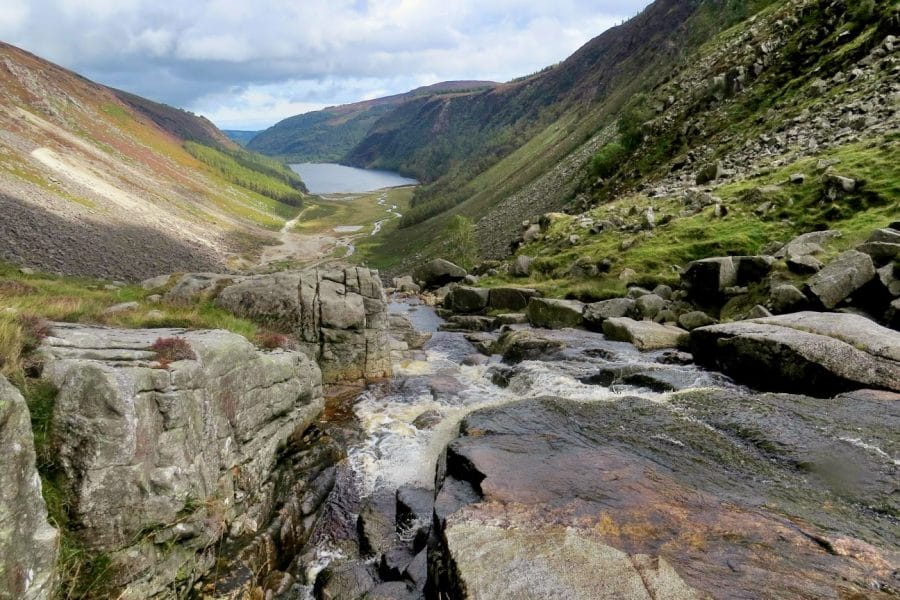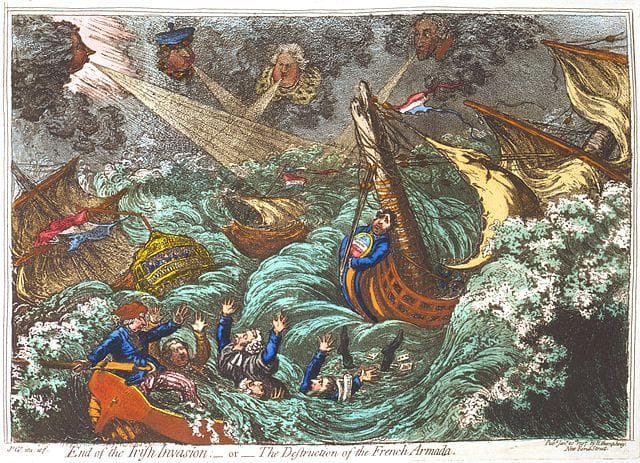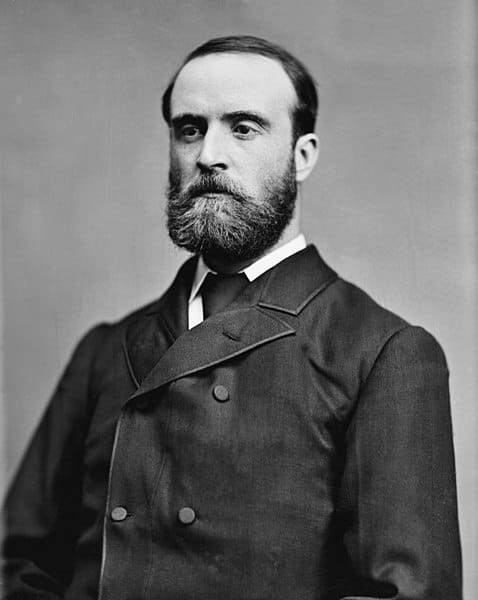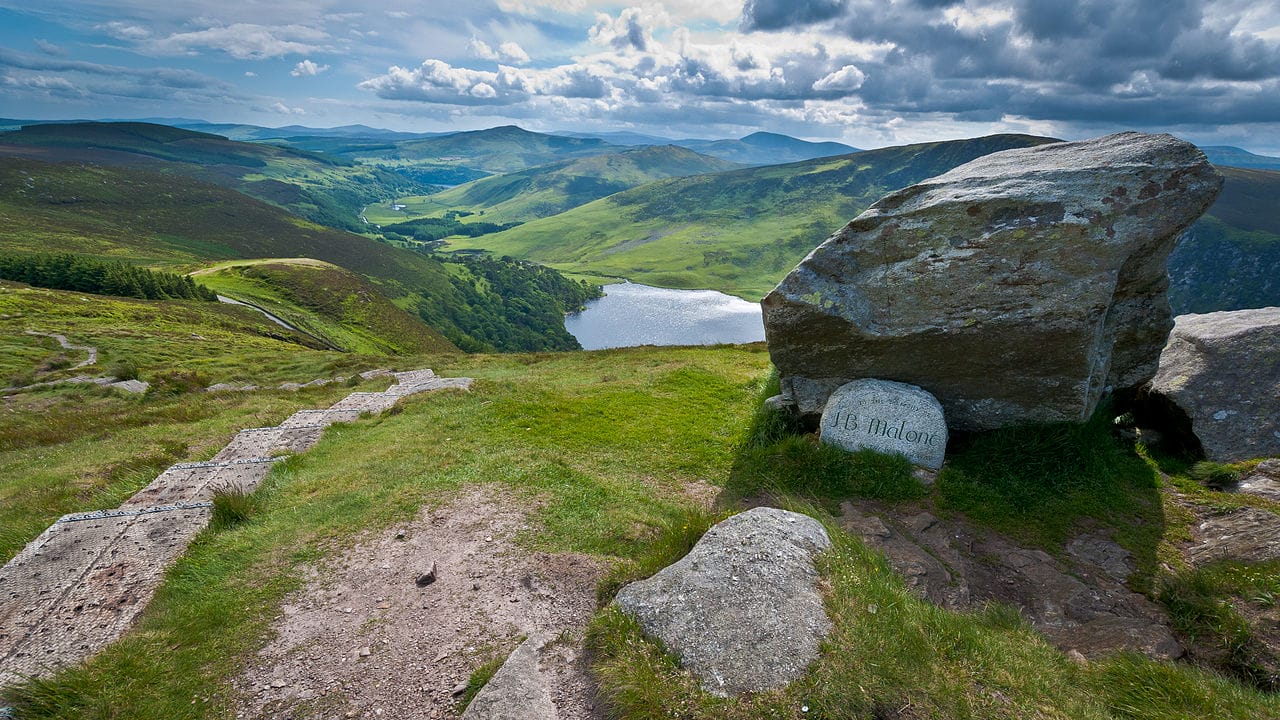In a previous post we introduced you to the highlights of the Wicklow Way. This national trail brings hikers to the heart of County Wicklow through the Wicklow Mountains. In this post, you can discover the fascinating history of Wicklow. Much of this is also found along the Wicklow Way and offers an unique glimpse into Irish history.
County Wicklow is known as the garden of Ireland. It is not entirely clear whether this is due to the beautiful parks around it’s many manor houses or the untouched natural beauty of its hills and mountains. What is certain, however, is that the wild landscape it contains has influenced and reflected the history of its rebellious inhabitants in the past.

16th century – Destruction of the O’Byrne clan
In the 16th century, when most of the Irish island was already under British rule, the area around the Wicklow Mountains was still ruled by the O’Byrnes clan. This is astonishing in that Wicklow was very close to Dublin, and thus right ‘in front of the nose’ of the second capital of the Empire.
The O’Byrnes resisted numerous attempts of conquest from the British crown, which earned the area the name Ireland’s last county.
Towards the end of the 16th century, however, the English army managed to seize control after attacking the clan’s headquarters in Rathdrum. The O’Byrne clan lost all of their land. Queen Elizabeth gave the area to Harry Henrington, an English adventurer and investor.
In 1630, Thomas Wentworth was appointed deputy ruler and the O’Byrnes land was transferred to him.
When Oliver Cromwell overthrew the Queen in 1634, he claimed all of the Crown’s lands. But after Charles the Second rebuilt the monarchy, the land in Wicklow was returned to Wentworth.
In the meantime, the former territory of the O’Byrnes was called the Coolattin Estate. It covered 85,000 acres, which is one-fifth the total area of County Wicklow. More than 20,000 people lived on this land at that time.

17th century – The era of large landowners begins
The land around Coolattin Estate and the remainder of County Wicklow has now been distributed to English landowners. Even today, landlords in the English-speaking world are called ‘landlords’ and the British landlords were literally the masters of the land.
Under their influence, the landscape emerged that still characterizes the rural areas in Wicklow today. Through the hard work of a generation of landless farmers, a wild natural landscape with no roads was transformed into fields and parks.
While the large landowners built magnificent mansions, a large part of the Irish population lived in abject poverty. Records show that a quarter of families lived in mud or stone huts with only one room. They had to also pay various taxes to their British landlords, including one for the use of chimneys. This resulted in many of the local Irish simply lighting a fire in the middle of their home and letting the smoke escape through the thatched roof or the windows.
The magnificent mansions of the landlords with their beautifully decorated rooms and spacious parks have been preserved to this day and are open to visitors giving a great insight into their life at that time.

18th Century – The 1798 Rebellion
In 1786, the last wolf was seen in the Wicklow Mountains. Almost twenty years later, one of the last Irish rebels of 1798 had to surrender in Wicklow.
Inspired by the French and American revolutions, an alliance of various Irish insurgents was formed, who made it their goal to end British foreign rule. The main organizers were the members of the republican organization United Irishmen. Some of their commanders belonged to the Anglo-Irish elite and they were hoping for support for their cause from France. The revolutionary Wolf Tone managed to bring ten ships from the French army and a total of 14,000 French veterans to the rescue. But as is so often the case, the weather influenced the course of Irish history.
Due to storms and a lack of resolve, most of the ships were hijacked before they even reached the coast. The rebellion was unsuccessful and Michael Dwyer, one of the last rebels to hold out in the inaccessible mountains, finally had to surrender in 1808.
Caricature by James Gillray – The Debacle of the French Armada. Library of Congress
19th Century – Famine and Irish Land League
The 19th century saw the most tragic episode in Irish history: the great famine. The potato blight destroyed the harvest for three years in a row, which cost a large part of the population the basis of their food. Millions of people emigrated or died.
Many landless farmers could no longer pay the rent and were driven from their homes by the large landowners. To strengthen their rights, Michael Davitt founded the Irish Land League in 1879. Their main aim was to abolish the large landlord system and allow farmers to own the land they were working.
Davitt was soon assisted by Charles Stewart Parnell. Although he came from wealthy circles, he stood up as leader of the Home Rule Party for the independence of Ireland and the rights of landless farmers.
Avondale Park, Parnell’s birthplace, is one of the many imposing properties in Wicklow and can be toured from April to October.
The work of the Irish Land League often led to brutal excesses and went down in history under the name The Land War. In combination with the Irish Rebellion of 1916, the land was ultimately redistributed from the large landowners to the tenants.

Charles Stewart Parnell
20th century – the birth of the Wicklow Way
You can discover many of these locations, famous in Irish history, while hiking the Wicklow Way.
The Wicklow Way was originally proposed by J. B. Malone in a series of newspaper articles in 1966. Through TV programs, he also brought viewers closer to the beauty of nature in Ireland and thus made hiking popular as a leisure sport.
The avid hiker himself, JB Malone had to fight for years to see his dream become a reality. This included negotiating access rights with farmers, among other things. Finally, after many years of campaigning, the Wicklow Way was inaugurated in 1981 becoming Ireland’s first official walking route.
Following his death in 1989, Malone’s contribution to hill-walking in Ireland was celebrated by the erection of the JB Memorial Stone at his favorite spot on the Wicklow Way overlooking Lough Tay.
Today, the Wicklow Way is one of the busiest of Ireland’s National Waymarked Trails, with over 20,000 people a year walking the most popular sections.

Memorial stone to JB Malone. Photo: wikimedia_Joe King


